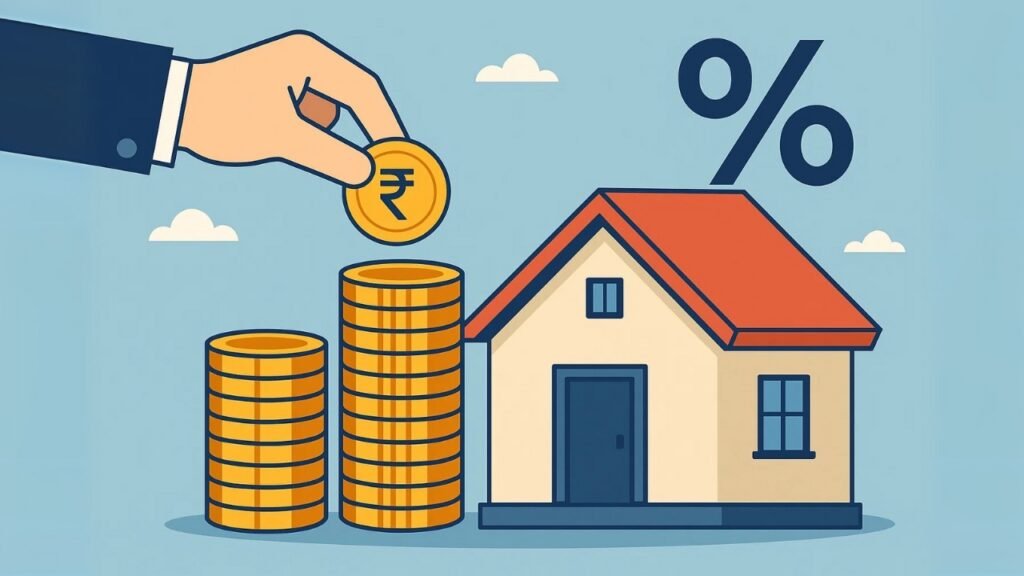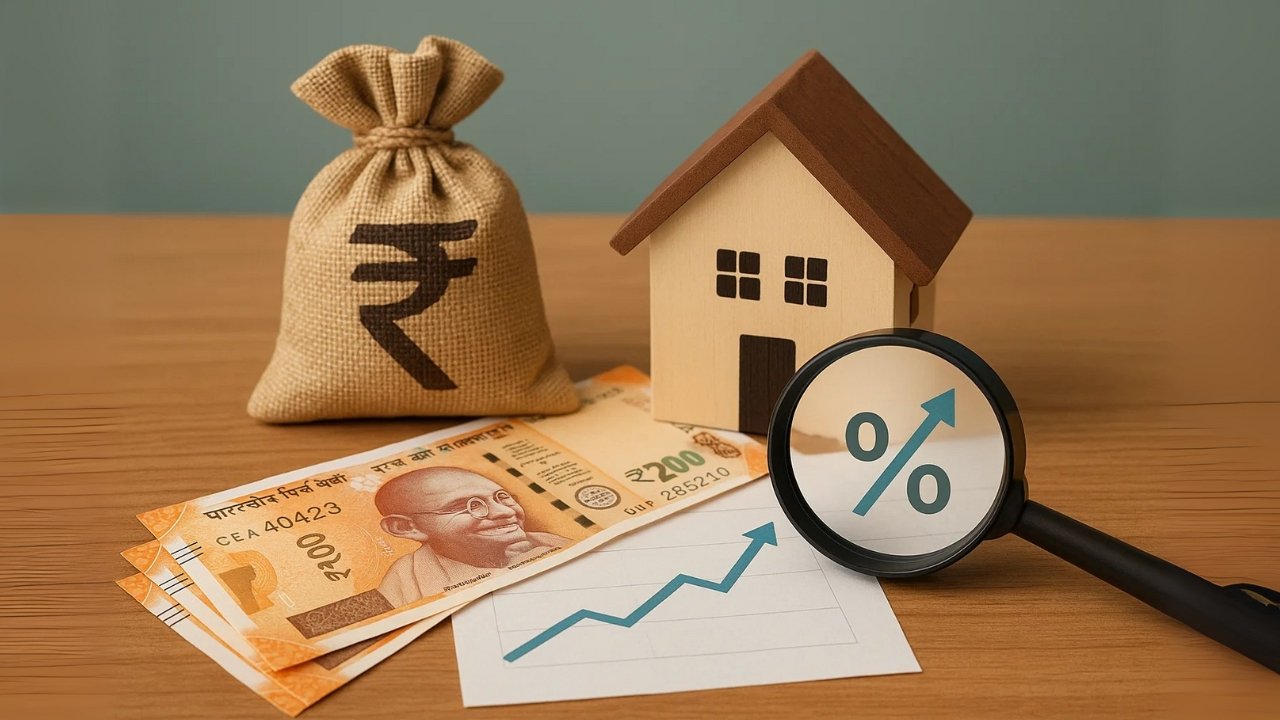Let’s cut to the chase. You’re not just looking for a home loan; you’re looking for the smartest way to finance the biggest purchase of your life. The difference between a good interest rate and a great one can translate into lakhs of rupees saved over your loan tenure. It’s not just a monthly EMI; it’s your future financial flexibility.
Navigating the landscape of home loan interest rates in India can feel overwhelming. Every bank and NBFC claims to offer the best deal. How do you cut through the noise and find the offer that truly works for you? This guide is designed to be your strategic roadmap, focusing purely on the facts, the figures, and the factors that matter.
Understanding How Home Loan Rates Work in 2025

Gone are the days of a standard, one-size-fits-all rate. Today, most lenders offer loans linked to an External Benchmark Lending Rate (EBLR), typically the Reserve Bank of India (RBI) repo rate. This means your interest rate is more transparent and adjusts with the market.
The rate you are finally offered is based on a combination of the benchmark and a spread (the lender’s margin). Your goal is to minimize that spread. Your offered rate depends on several key factors:
- Credit Score: This is your financial report card. A score above 750 makes you a prime borrower and unlocks the best rates.
- Income and Stability: A higher, stable income with a low existing debt-to-income ratio signals lower risk to the lender.
- Property Details: The age, location, and legal clarity of the property you wish to buy are critically assessed.
- Loan-to-Value Ratio (LTV): A larger down payment (lower LTV) reduces the lender’s risk and can earn you a concession on the interest rate.
- Relationship with the Lender: Existing customers with salary accounts or other products often get preferential pricing.
Comparing the Top Players: A Snapshot
While rates change frequently, here’s a comparative look at some of the leading lenders known for competitive home loan offers. (Note: Rates are indicative and subject to change. Always check the lender’s website for the latest information.)
| Lender | Starting Interest Rate (p.a.) | Key Feature |
|---|---|---|
| State Bank of India (SBI) | 8.40%* | Largest public sector bank; offers special concessions for women borrowers. |
| HDFC Ltd. | 8.40%* | Leading private housing finance company; wide range of customizable products. |
| LIC Housing Finance | 8.40%* | Trusted brand; offers flexible repayment options for pensioners and salaried. |
| Axis Bank | 8.40%* | Competitive rates; quick processing and digital application system. |
| Bank of Baroda | 8.40%* | Attractive offers under its “Baroda Home Loan” campaign; low processing fees. |
*Rates are indicative for salaried applicants and may vary. Last updated for illustrative purposes.
Beyond the Interest Rate: What Else Should You Scrutinize?
Fixing on the lowest advertised rate is a common mistake. A truly good deal is about the total cost of the loan. Before you sign on the dotted line, ask these questions:
- What is the Processing Fee? This can be a significant upfront cost, ranging from 0.25% to 1% of the loan amount (often with a cap). Negotiate this or look for lenders offering fee waivers during promotional periods.
- Are There Prepayment Charges? A crucial factor for your long-term strategy. Most floating-rate loans now allow prepayment without charges, but always confirm this.
- What is the EMI-to-Income Ratio? Use online calculators to see if the EMI is comfortable for your monthly budget. Financial advisors often recommend keeping it under 40% of your net monthly income.
- What is the Loan Tenure? A longer tenure reduces your EMI but increases the total interest paid. Find the right balance between affordability and total cost.
Your strategy should be simple: get your credit score in order, get quotes from at least three different types of lenders (a public bank, a private bank, and an NBFC/HFC), and compare the total cost, not just the headline rate.
The information on lender websites, such as the State Bank of India’s home loan portal, is the most reliable source for their latest offers and eligibility criteria. For a broader understanding of financial terms and regulations, the Reserve Bank of India (RBI) website is an authoritative resource for all borrowers.
Securing the best home loan rate is a deliberate process, not a lucky break. It requires research, preparation, and a clear understanding of your own financial health. By focusing on these core aspects, you move from being just an applicant to an informed borrower, ready to make a decision that your future self will thank you for.
Frequently Asked Questions (FAQs)
1. What is the minimum salary required to get a home loan in India?
There is no universal minimum salary set across all lenders. Eligibility is based on your ability to repay the EMI, which is determined by your income, existing obligations, and the loan amount. Typically, lenders require that your EMI does not exceed 40-50% of your monthly income.
2. Is it better to go with a public sector bank or a private bank for a home loan?
Both have their advantages. Public sector banks like SBI or Bank of Baroda often have marginally lower interest rates and processing fees. Private banks and HFCs like HDFC Ltd. might offer faster processing and more personalized service. The best choice depends on the specific deal you are offered and your personal preference.
3. Can I negotiate my home loan interest rate with the lender?
Absolutely. If you have a high credit score (750+), a stable job, and an offer from a competing lender, you have strong grounds to negotiate for a lower spread over the benchmark rate. It always pays to ask.
4. How often do floating home loan interest rates change?
Since most loans are now linked to an external benchmark like the RBI repo rate, the reset frequency is typically every three months. However, this can vary by lender. Your loan agreement will specify the exact reset clause.
5. Does the interest rate differ for a new home vs. a resale property?
Yes, it can. Lenders often perceive a new property from a approved builder as a lower risk compared to a resale property. Consequently, you might secure a slightly better interest rate for a new property. The exact difference depends on the lender’s policy and the specific property’s valuation.

